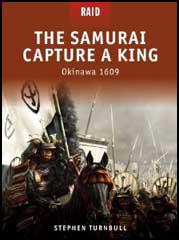Spartacus Review
Volume 44: 25th April, 2010
Military History

Title: The Battle of the Berezina
Author: Alexander Mikaberidze
Editor:
Publisher: Pen & Sword
Price: £19.99
Bookshop: Amazon
Spartacus Website: Lord Castlereagh
Category:
In the winter of 1812, Napoleon's army retreated from Moscow under appalling conditions, hunted by three separate Russian armies, its chances of survival apparently nil. By late November Napoleon had reached the banks of the River Berezina - the last natural obstacle between his army and the safety of the Polish frontier. But instead of finding the river frozen solid enough to march his men across, an unseasonable thaw had turned the Berezina into an icy torrent. Having already ordered the burning of his bridging equipment, Napoleon's predicament was serious enough: but with the army of Admiral Chichagov holding the opposite bank, and those of Kutusov and Wittgenstein closing fast, it was critical. Only a miracle could save him. In a gripping narrative Alexander Mikaberidze describes how Napoleon rose from the pit of despair to the peak of his powers in order to achieve that miracle. Drawing on contemporary sources - letters, diaries, memoirs - he recreates one of the greatest escapes in military history - a story often half-told in general histories of the Russian campaign but never before fully explored.

Title: Dervish: The Rise and Fall of an African Empire
Author: Philip Warner
Editor:
Publisher: Pen & Sword
Price: £19.99
Bookshop: Amazon
Spartacus Website: Boer War
Category:
Dervish is the vivid and colourful story of one of the more remarkable episodes in the "high Empire" period of British history. The Mahdi’s rising in the Sudan in the 1880s starting as a localized Holy War against the "decadent" Turkish/Egyptian overlords, engulfed a million square miles of arid territory and forced the British Liberal Government to get involved after the early disasters of the Hicks expedition and Gordon’s death at Khartoum. The narrative, which makes excellent use of the first-hand diaries and reports, including those of Rider Haggard’s brother Andrew and of Father Ohrwalder (the Austrian missionary who spent ten years of captivity in the Mahdi’s camp), brilliantly describes the growth and strength of the Mahdist movement and the extraordinary devotion and discipline of the Dervish troops. Facing such opponents with stoic endurance were the British, Egyptian and Sudanese Negro soldiers, and the resulting military engagements evoked amazing feats of courage and derring-do on both sides. The Dervish Empire outlasted the Mahdi by thirteen years. It ended in the battle of Omdurman and Kitchener’s reconquest of the Sudan, which was well supported by Reginald Wingate’s military intelligence operations. It lasted a comparatively brief span of time, but it had been established at the expense not only of the neighbouring Abyssinians but also of the European white man, at a time when Britain was approaching the zenith of its imperial power.

Title: Hatamoto
Author: Stephen Turnbull
Editor:
Publisher: Osprey
Price: £11.99
Bookshop: Amazon
Spartacus Website: Military Website Websites
Category:
Each great samurai warlord, or daimyo, had a division of troops known as the Hatamoto, 'those who stand under the flag'. The Hatamoto included the personal bodyguards, the senior generals, the standard bearers and colour-guard, the couriers, and the other samurai under the warlord's personal command. Apart from bodyguard and other duties in immediate attendance on the daimyo, both horse and foot guards often played crucial roles in battle. Their intervention could turn defeat into victory, and their collapse meant certain defeat. As favoured warriors under the warlord's eye, members of the bodyguards could hope for promotion, and a few even rose to be daimyo themselves. All the three great leaders of the 16 and 17th centuries - including Oda, Hideyoshi and Tokugawa - had their own elite corps. Such troops were naturally distinguished by dazzling apparel and heraldry, with banners both carried and attached to the back of the armour, all of which will be detailed in an array of colour artwork specially created for this publication.

Title: The Samurai Capture a King
Author: Stephen Turnbull
Editor:
Publisher: Osprey
Price: £11.99
Bookshop: Amazon
Spartacus Website: Military Website Websites
Category:
A brilliant but little-known operation, the Shimazu clan raid on the independent kingdom of Rykyu (modern Okinawa) in 1609 is one of the most extraordinary episodes in samurai history and the culmination of centuries of rivalry between the two powers. The defeat of the Shimazu at Sekigahara in 1600, and their need to win favour with the new Shogun, led them to hatch an audacious plot to attack the islands on the Shogun's behalf and bring back the king of Rykyu as a hostage. Stephen Turnbull gives a blow-by-blow account of the operation, from the daring Shimazu amphibious landing, to their rapid advance overland, and the tactical feigned retreat that saw the Shimazu defeat the Okinawan army and kidnap their king in spectacular fashion. With a detailed background and specially commissioned artwork, the scene is set for a dramatic retelling of this fascinating raid.
